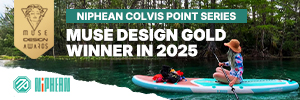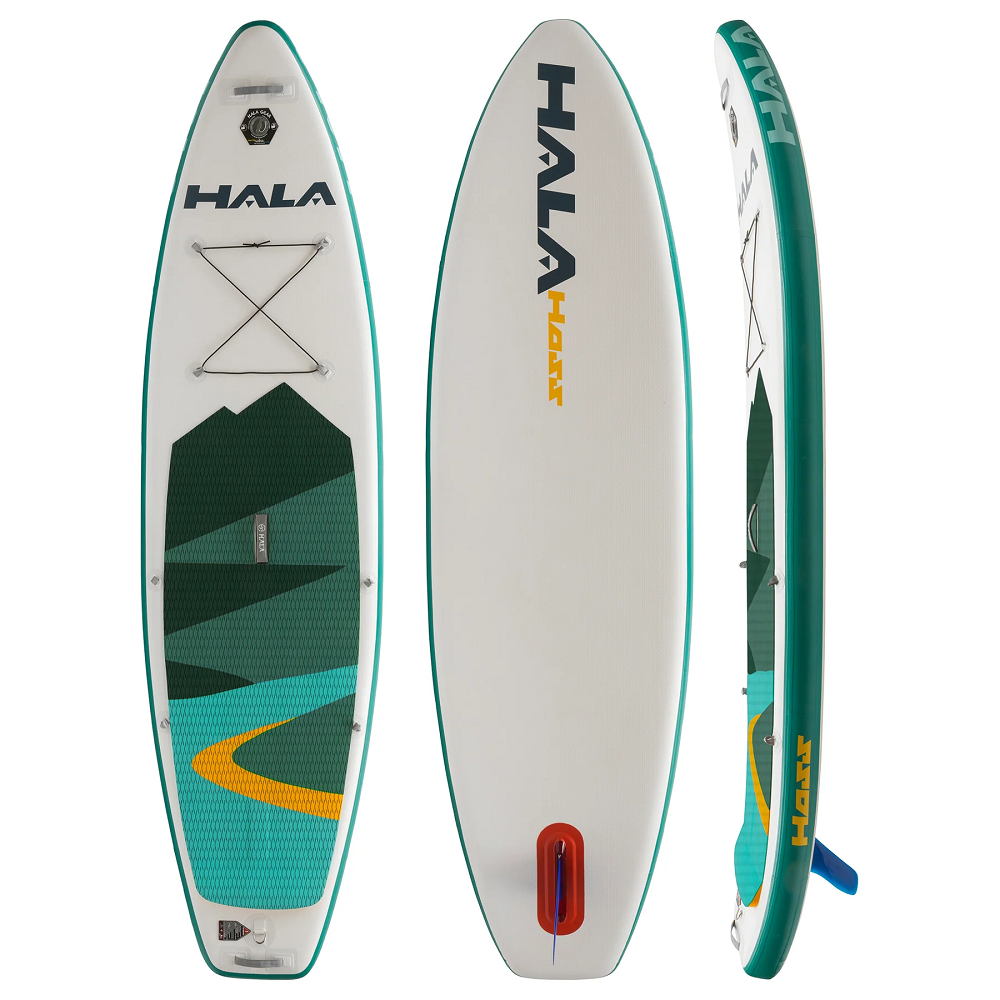You might be asking yourself “Do I really need a special paddle board for rivers?” That’s a very good question with two very different answers depending on what you mean when you think “river.”
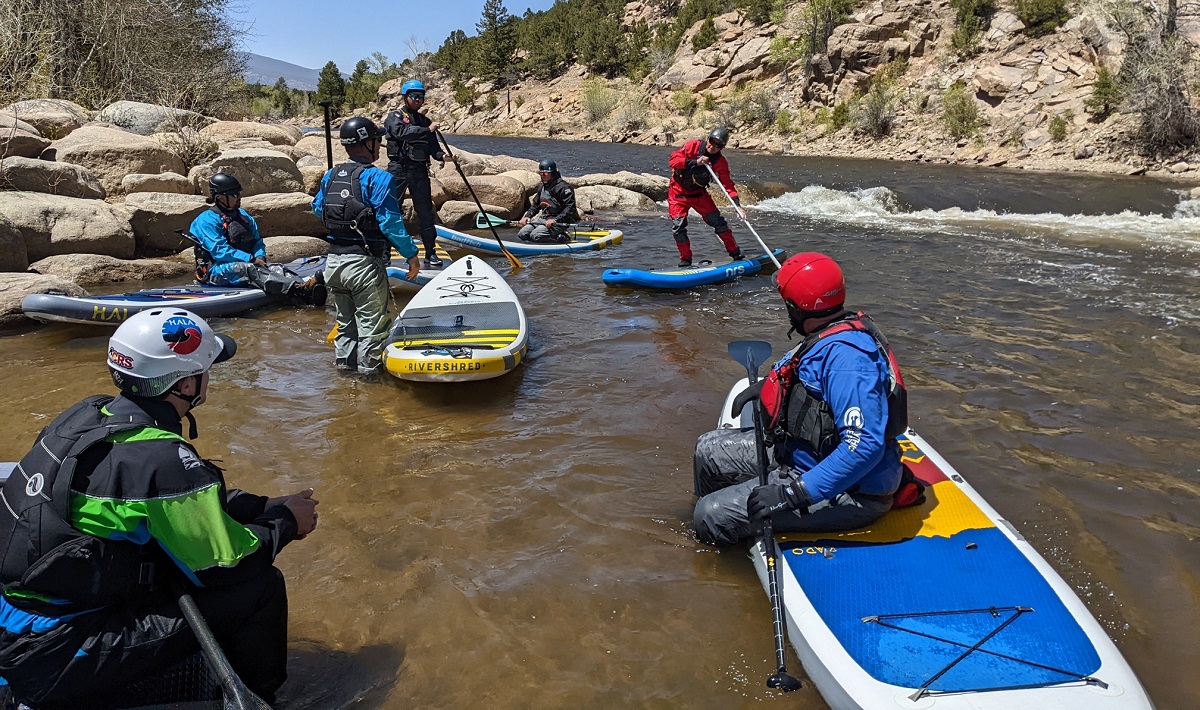
I’ll be 100% frank with you (actually, it’s Mike, but that’s OK… 🤦♂️), not all rivers require a different kind of paddle board, but there are some universal considerations on all rivers.
First and foremost – NEVER wear a standard leash while paddling on any moving water, even calm rivers. We wear leashes on open water for safety to stay connected to our boards when out in open water, however those same leashes can become dangerous and deadly hazards on moving water. While paddling on a river (tidal estuary, or other body of moving water) either do not wear a leash or only use a quick-release leash worn on your torso (and practice releasing it). Don’t forget to wear your PFDs!
That out of the way, when you paddle on flat, calm rivers with few surface hazards you can use just about any paddle board you choose. That could be a dedicated river SUP, an all-around board, or even a narrow racing or touring paddle board to match what you want to do.
However, paddle boards built for the river can offer several advantages, and even become a requirement for safe paddling on faster, more advanced rivers. Board construction, shape, and even the fin setups become more specialized on paddle boards built for rivers to give them extra stability, maneuverability, and the option to paddle through rough whitewater.
All of these features are found on a continuum. Some river boards have more of X, but less of Y, etc. And so you can find paddle boards designed for river cruising, river adventure travel, and whitewater SUP. So we’ve divided this list into two groups – Best River SUPs for cruising and adventure, and Best Whitewater SUPs for the hard-charging thrill seekers (it’s seriously fun).
Best River SUPs
Best Whitewater SUPs
Best River SUPs
1. Hydrus Joyride XL (See Full Review)
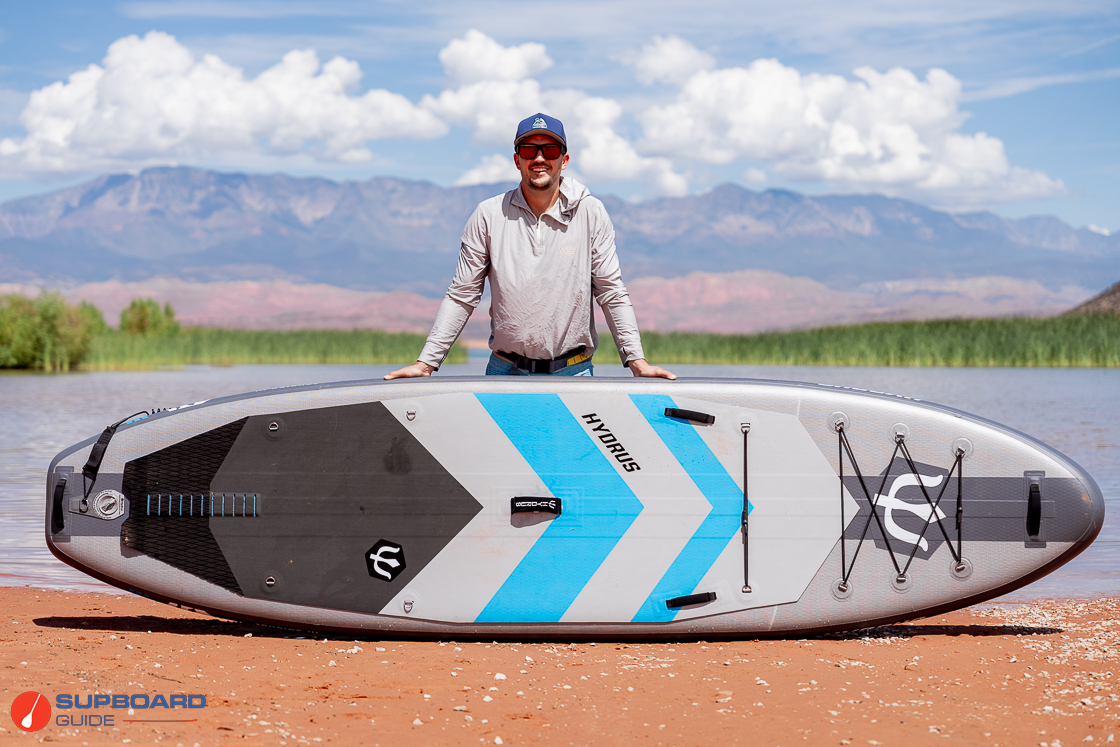
Save 12% on the Joyride XL with code: SUPBOARDGUIDE
- Excellent construction with welded rails and reinforced materials for maximum durability
- Very stable shape for all skill levels and rivers up through Class II
- Shaped for optimum performance on rivers without sacrificing flatwater use
- Rigged for adventure travel and overnight trips
- Comes with multiple fins, including a 5” flex fin for rivers
- Paddle sold separately (but the Hydrus paddle is great for rivers)
- Single fin box is great for most situations, but can be limiting in shallow water
First up on our list of the Best River SUPs is the Hydrus Joyride XL. This larger all-around paddle board is designed for performance on the river and on flat water, making it a great choice for paddlers who like both environments.
The Joyride XL is built with a cross-woven drop stitch core, dual-layer fusion PVC, carbon fiber fabric stringers, and heat-welded seams with a maximum pressure of 20 PSI (tested to 35 PSI). Together this creates an extremely stiff and rigid paddle board that’s ready for anything.
On the deck you’ll find a comfortable pad along with enough cargo space and D-rings to load up for an afternoon or a week on the water.
What makes it a great river board? The shape. Hydrus is a river-focused company that understands exactly what is needed for effective paddling on moving water. The Joyride XL has a moderate progressive nose rocker to easily get you over the splashy water you’ll find on rivers up to Class III, and the parallel outline keeps the board incredibly stable no matter how it’s loaded up or where you are standing. To top it off, the Joyride XL comes with three different fins including a 5” flexible fin for paddling in shallow or rocky rivers.
The Joyride XL doesn’t come with a paddle automatically, but bundling the Hydrus 3-piece paddle with your board is the right choice. The carbon fiber/fiberglass paddle is light and rigid, and the blade is coated in Hydrus’s proprietary Armalight material to make it incredibly durable – even in whitewater.
2. Hala Rado (Full Review Coming Soon)
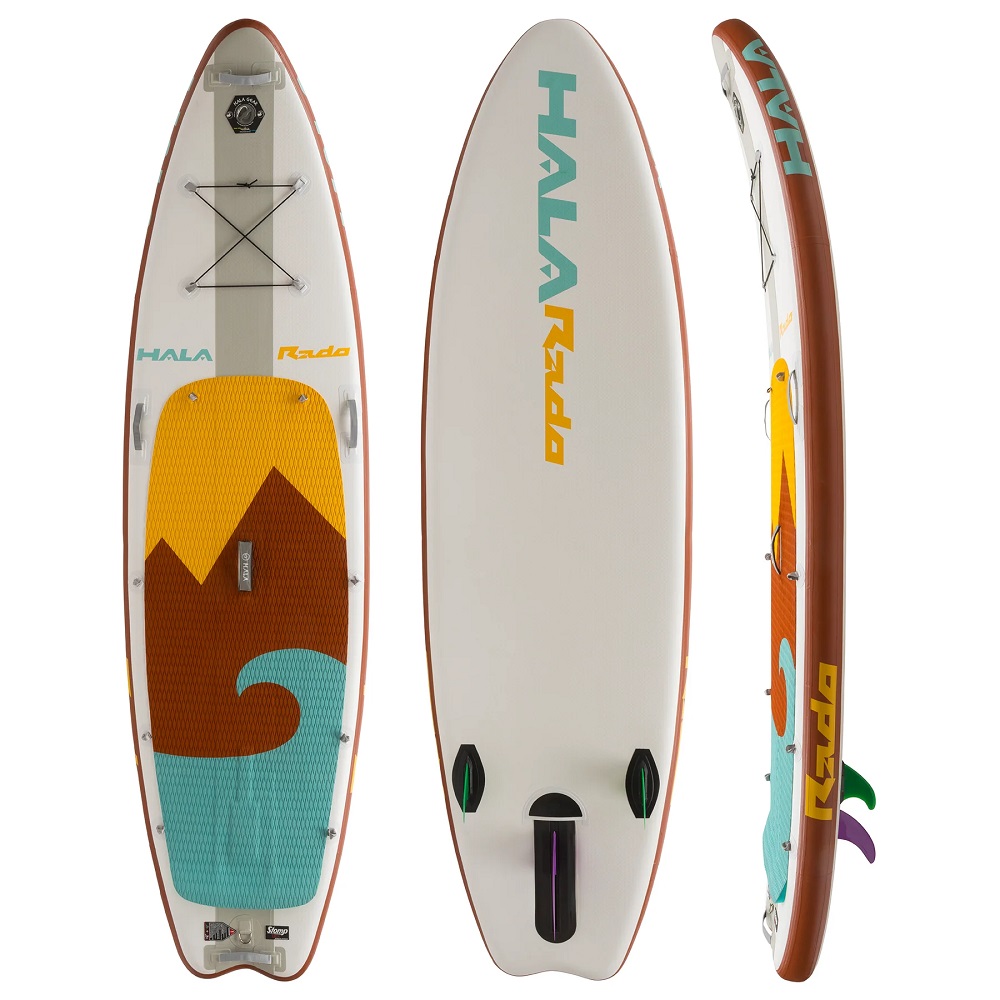
- High quality construction, including welded seams, for great durability and rigidity
- Optimized shape for stability and performance on the river
- Soft rigging points on the deck for safety
- High-traction deck pad for secure footing in all conditions
- Stomp Box retractable fin system to use larger fins in shallow water
- 2+1 fin setup for maximum versatility
- Paddle sold separately
- The Rado tips the scales at just over 28 pounds for the board and fin box
This is the problem with lists – they have an order! When push comes to shove I’d have a hard time picking a true first-place contender for our list of Best River SUPs between the Hala Rado and the Hydrus Joyride. Both are absolute beasts on moving water.
The Hala Rado is more focused on river performance rather than flat water performance. More of a 60/40 split vs a 50/50. The nose rocker is noticeably large (though not quite to the degree of a dedicated whitewater board), and the entire shape has been optimized for performance in those Class II-Class III rivers.
But, that being said, it is still a great board for flatwater adventures as well.
There’s a ton of cargo room for everything up to, and including, remote expedition paddling, and the 2+1 fin system means you can “fin up” a bit to improve tracking performance when off the river.
Speaking of fins, the Hala Rado features Hala’s StompBox 2.5 retractable fin system. This spring-loaded fin system allows you to use a full-size 9” fin for tracking and drive even in shallow water. When the fin hits a rock or other object, it simply folds into the fin box and springs back out once you’ve passed the object. Hala also makes a 4.5” fin for the StomBox system if you paddle in consistently shallow water or want more maneuverability all the time.
3. Blackfin Model X (See Full Review)

- Bring everything (including the kitchen sink) with an unparalleled set of onboard cargo and accessory features
- Perfect for river anglers
- Wide, stable shape with great maneuverability
- Includes a complete accessory kit with paddle and electric pump
- Versatile fin setup and compatible with an optional 6” flexible fin
- While very stable and able to handle rivers up to Class II, the Model X has a lower nose rocker that isn’t ideal for the moderate to larger waves and features of Class II+ rivers
Blackfin paddle boards are found on nearly every one of our Best lists, and for a good reason. Blackfin (a sub-brand of iRocker), provides a high-quality and high-value option for paddlers who like to do a bit of everything.
The Blackfin Model X is a wide and stable iSUP with great construction including carbon fiber fabric reinforced rails for maximum durability and impact protection along the most critical part of the paddle board. The shorter length and wide size make it very maneuverable, and the 2+1 fin setup lets you customize the Model X’s agility and tracking performance. iRocker also has new 6” semi-flexible river fins available for the Blackfin center fin box.
In addition to its stability and maneuverability, the Blackfin Model X is possibly the best choice when it comes to river fishing. Blackfin boards build in tons of features and accessory mounting points for anglers. Threaded attachments are great for rod holders, cameras, and other small accessories, and the two Scotty-style plates on the rear of the board are compatible with tackle racks and more. The Blackfin Model X is also designed to be compatible with iRocker’s inflatable kayak seat for those who prefer to paddle seated through the rougher stuff.
4. Red Paddle Co Ride 10’8 (See Full Review)
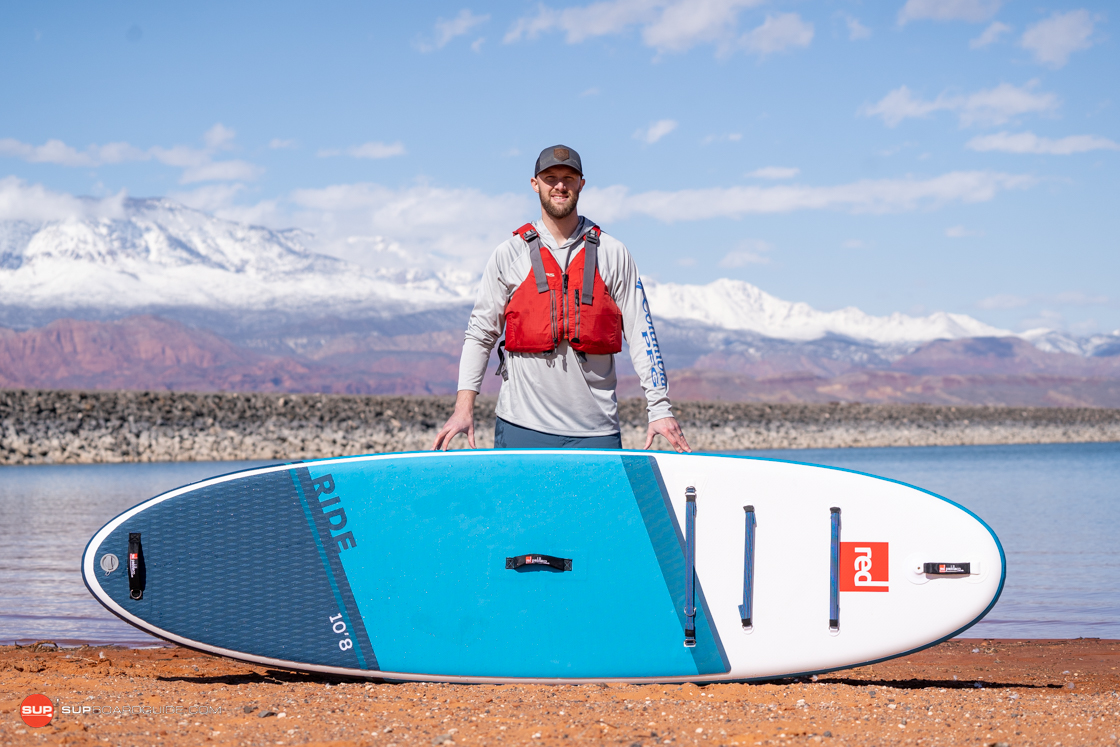
- World-renowned construction and design
- Excellent stability and easy maneuverability, plus a 4.7” thick board can help you feel even more stable and connected to the water
- Two unbreakable fixed fins (5”)
- High-traction deck pad, particularly on the rear of the board
- Paddle sold separately
- The fixed fins offer a good balance of maneuverability and tracking, but aren’t changeable if you want shorter or longer fins
The Red Paddle Co Ride 10’8 is the dark horse of our list. This board wasn’t necessarily designed for the river, but it’s excellent performance and twin, unbreakable, fins make it a great choice for those flatwater paddlers who want to occasionally hit the river, and can make for a fun experience on up to Class II whitewater.
The Ride 10’8 is super stable thanks to its 34” width, rounded nose, and 4.7” thickness. That thinner board profile lowers your center of gravity and gives the board a more connected feeling to the water. It’s hard to put a number, or even a description, to the feeling of a 4.7” board compared to a 6” one, but it’s noticeable from the moment you stand up.
Under the Ride 10’8 are a pair of 5” “unbreakable” flex fins that are permanently fixed to the hull of the board. This twin fin design helps the Ride 10’8 track straight when you want it to, and break loose for quick turns when you need it. The shorter fins prevent you from hitting most things in the water, but if you do, the flexible material simply bends out of the way.
5. Hala Straight Up (Full Review Coming Soon)
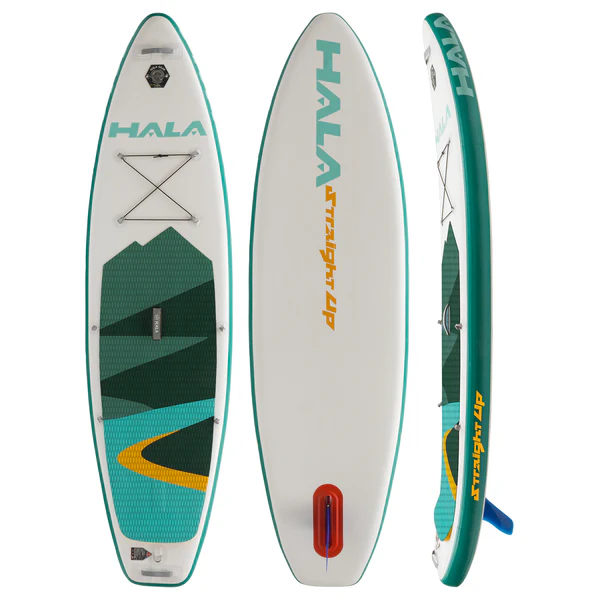
- High quality construction with welded seams and dual-layer PVC rails for extra protection
- Stable, yet streamlined shape designed for river and flatwater cruising
- Ultra-grippy deck pad and soft rigging points
- US fin box for easy fin swaps
- Comes with the Hala B-Line three-piece paddle
- No StompBox like the Hala Rado, and the standard fin is 9” long, so you’ll want to get a shorter flex fin to go with it.
- The shorter length is more maneuverable, but may not be the best for taller paddlers
The Hala Straight Up is a river and flatwater cruiser designed for those casual after-work floats with friends. The Straight Up is a little shorter at just 10’ long, but has a 33” maximum width. The outline and rocker profile have been tweaked for this year to provide better tracking while still maintaining enough maneuverability and rocker to handle those bumpy stretches.
Hala includes a 9” flex fin with the Straight Up for even better tracking on flat water. In many situations for mellow rivers, a 9” flex fin works great. You’re not likely to hit bottom most of the time, and if you do, the fin will bend out of the way. However, if you do paddle shallower rivers or expect a bit more turbulence with the occasional Class II rirfle, then swapping out for a shorter flex fin is a good idea.
The Straight Up does come as a complete kit with the Hala B-line three-piece carbon fiber/nylon paddle. Just throw on your PFD, and you’ll be ready to hit the water.
6. Hala Hoss (Full Review Coming Soon)
- Lightweight but durable construction with welded seams
- Extra stable size and shape
- Moderate rocker profile for flatwater and river use
- Extra rigging points and high-traction deck pad
- Comes with the Hala B-Line 3-piece paddle
- Included 9” fin does great on flat water, but may be too large for shallow rivers.
The Hala Hass is a big paddle board for big adventures. While it shares a similar size on paper with the Rado (10’10” x 35”), the Hoss has been developed for more all-around use instead of more river-specific use. The nose rocker has been lowered slightly for better flatwater performance, and the board is built a little lighter (23.5 lbs vs 28 pounds). Part of that weight change is in the fin system.
The Hoss has a single US fin box under the tail of the board rather than the StompBox 2.5 and two click-fin boxes on the Rado. The US fin box is still extremely versatile and allows you to use all sorts of different fins. Hala includes a 9” flex fin with the Hoss, which is great for flatwater and deeper rivers.
You also get a complete kit with the Hoss including Hala’s B-Line 3-piece paddle for one excellent price.
Best Whitewater SUPs
1. Hydrus Axis 98/88 (Full Review Coming Soon)
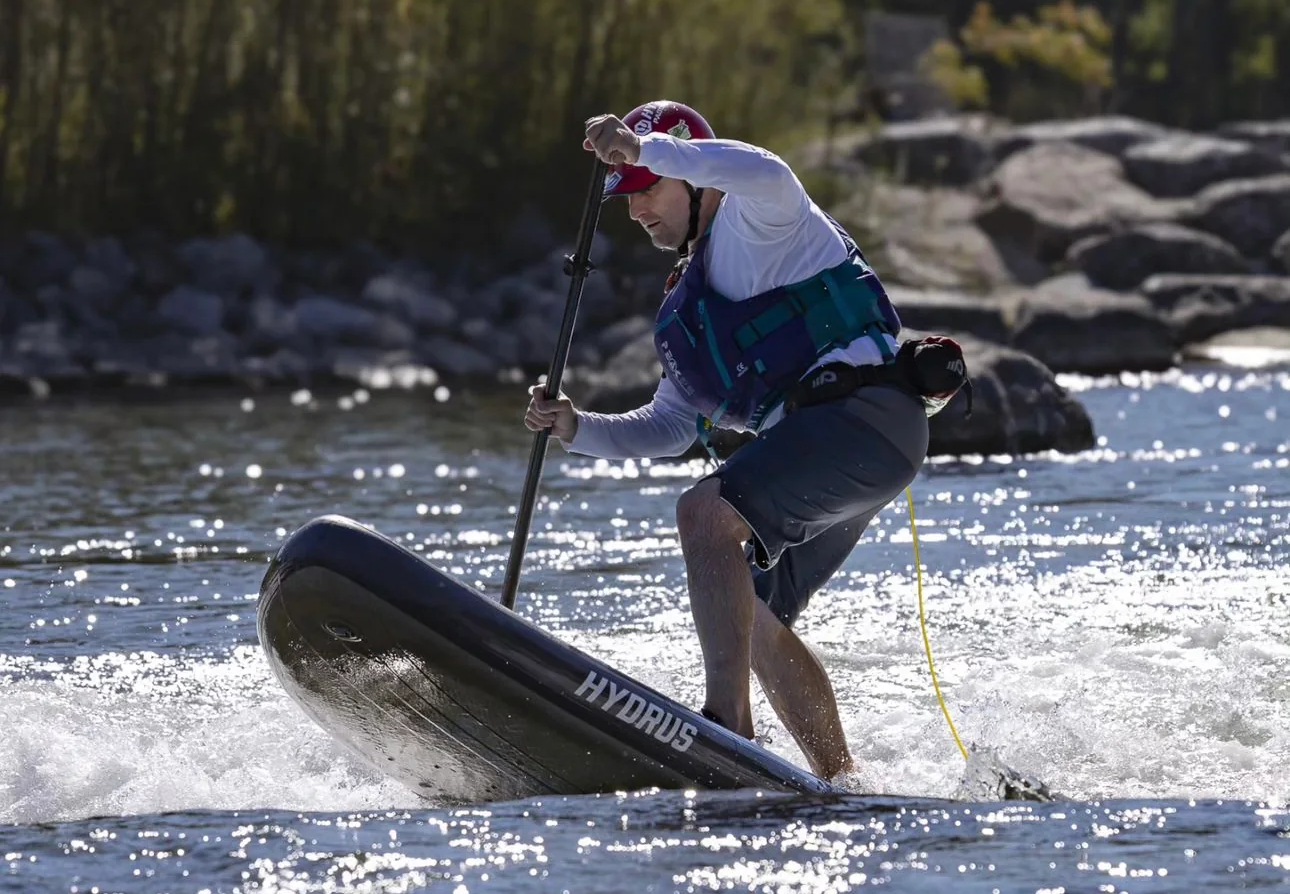
Save 12% on the Axis 98/88 with code: SUPBOARDGUIDE
- Top-notch construction with welded rails and carbon fiber stringers
- Stable, maneuverable, and tune-able design
- Continuous nose and tail rocker for trim control and smooth paddling over big features
- Quad fin setup to let you match your fins to your environment
- Comes with 8 total fins (four different pairs)
- Paddle sold separately (but the Hydrus paddle is great for rivers)
- The rocker profile is excellent for Class III+ whitewater, but isn’t quite large as some other whitewater boards
For the adventure and thrill seekers, whitewater stand up paddleboarding has it all – beautiful scenery, exciting runs through rapids of all sizes and shapes, and never a dull moment.
The Hydrus Axis 98 and Axis 88 were built from the ground-up using over a decade of whitewater SUP design experience to create the ultimate river-runner and river-play inflatable paddle boards. Built with aramid-reinforced PVC layers and welded seams, the Axis isn’t just here for a good time, it’s here for a long time.
The Axis 98 and 88 feature stable, wide outlines (36” and 34” respectively) matched with a moderately-high continuous rocker profile from tail to nose. By using a continuous rocker shape, you can easily adjust the total amount of rocker in the front of the board by shifting your weight forward or back. The gentle tapering shape at the hips of the board and wide square tail keep it stable as you move back or shift back for additional lift. At the same time, Hydrus chose to be a little reserved in the total amount of rocker on the Axis to help increase both stability and board speed on the water.
Under the tail of the board there are four fin boxes – two US fin boxes and two click-fin boxes. These standardized fin boxes let you adjust your fin setup to match your desired balance of maneuverability, tracking, and draft depth. Hydrus understands the need to make these changes, so the Axis ships with two 4.5” flex fins and two 3” flex fins for the US fin boxes in the rear, and two 4.5” fins and two 1.5” fins for the click-fin boxes in the front.
The Axis 98 is great for any whitewater paddler, while the Axis 88 offers a smaller board for smaller paddlers, or those advanced paddlers who want to play harder on every feature in the river.
2. Hala Atcha 96/86 (Full Review Coming Soon)
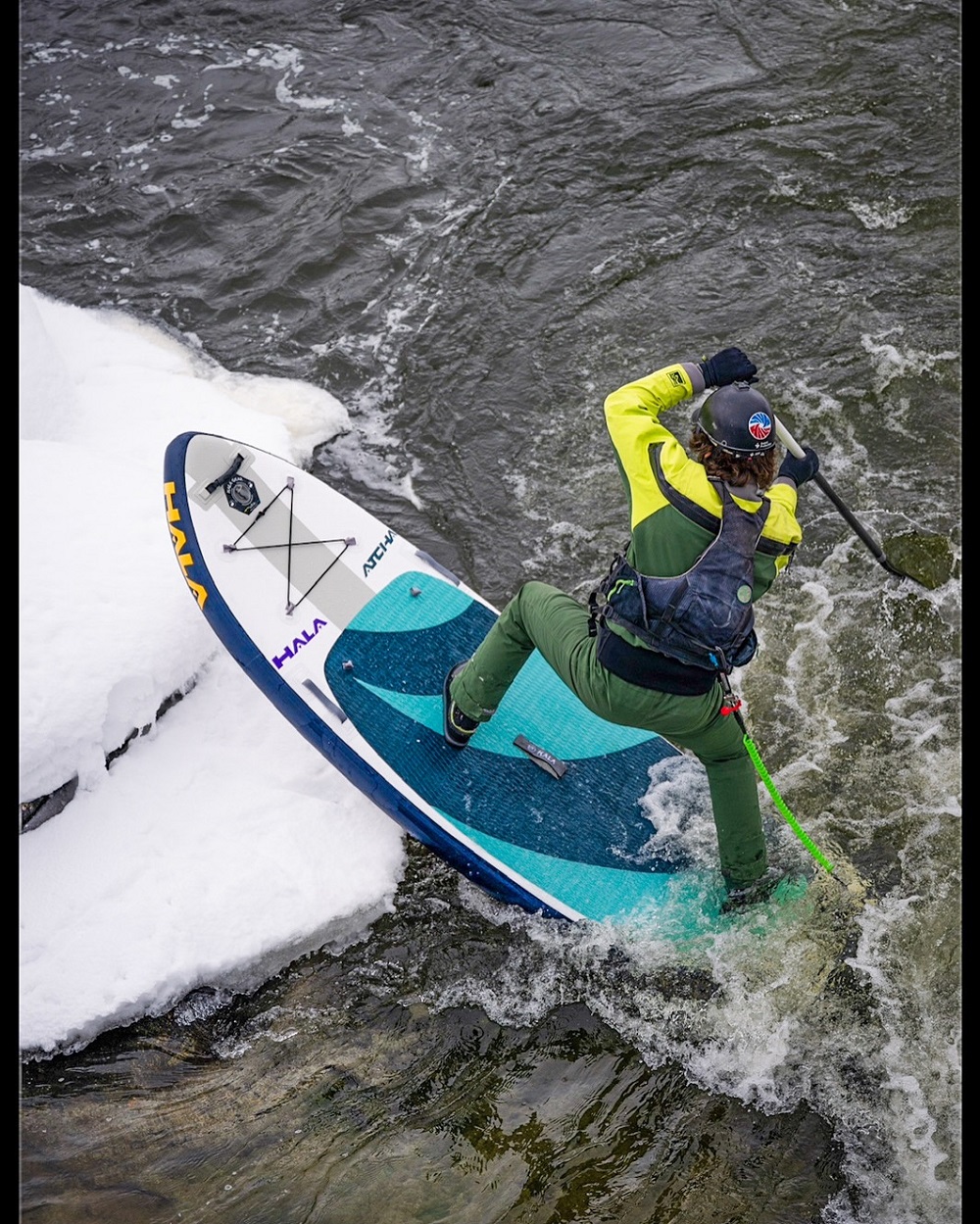
- Excellent construction for maximum durability and longevity
- Iterative design changes over the years to create a precise shape for whitewater paddlers
- Continuous rocker profile for control and clearance
- 2+1 fin setup with StompBox 2.5 retractable center fin
- Designed for river running and river play and surf
- Paddle sold separately
- The StompBox 2.5 is amazing for river running, but does require proprietary fins
The Hala Atcha is the Steamboat, CO, brand’s most famous board. When founder Peter Hall was building their first whitewater SUPs in the early 2010’s there was no design manual, or really any other SUPs designed for whitewater to look to, so they wrote the book themselves. Hala has been tweaking the shape, design, and features of the Atcha ever since with an iterative design process not seen anywhere else in this class of SUP.
So it shouldn’t be a surprise that the Hala Atcha is one of the best whitewater SUPs available today. This fully-dedicated whitewater SUP is ready for everything from your local “Class Fun” run to serious mank on Class IV and V whitewater for the advanced paddler. The continuous rocker profile is large enough to float you over most wave trains, and the newly-shaped nose is sharp enough to pierce the top of those monster haystacks that would otherwise stop a board in its tracks.
One of the key features separating the Atcha from the competition is the patented StompBox 2.5 fin system. This spring-loaded retractable fin box uses a specialized fin to give you the tracking performance and surfing drive of a full 9” fin, but lets it fold into the fin box when in contact with rocks and other objects in the water. The StompBox system is fully user-serviceable, but it does require proprietary fins from Hala (9”, 8” and 4.5” fins available).
The Atcha is available in a larger size (Atcha 9’6”) for most river runners, and a smaller size (Atcha 8’6”) for smaller paddlers and those who want a more playful whitewater SUP.
3. Glide O2 Lochsa (Full Review Coming Soon)
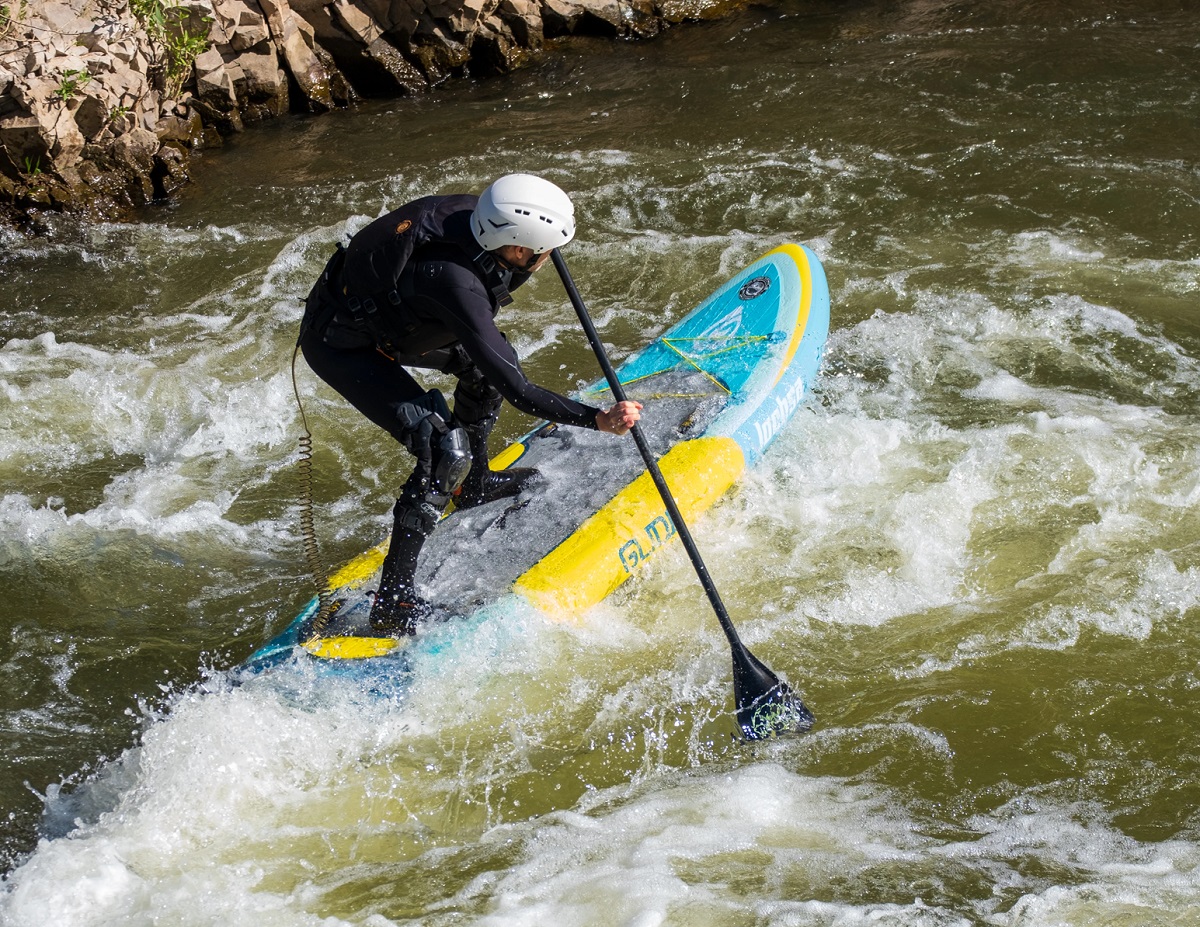
- New Glide 3.0 Construction is lighter and more durable than before
- 35” width balances stability and maneuverability
- Kick-rocker design adds stability and waterline length for speed
- 2+1 fin setup for different fin options
- Includes a full kit at a fantastic value
- The kick rocker shape doesn’t allow for as much fine-tune control as a continuous rocker shape
- Rounded tail shape aids in maneuverability and surfing, but does detract slightly from stability
Glide SUP is known for their ultra-tough paddle boards, both inflatable and rigid. Last year Glide announced their new “3.0” construction with cross-woven core, dual-layer fusion PVC, welded rails, and a triple-layer rail for even more protection and rigidity. This new construction shaved pounds off of their previous board weights without sacrificing performance or durability.
The O2 Lochsa 3.0 is Glide’s latest iteration on their whitewater SUP. Instead of using a continuous rocker profile, the Lochsa uses a kick-rocker where the main section of the board is flat, but the nose and tail are “kicked” up. Like with everything in board design, there are benefits and drawbacks to both continuous and kick-rocker shapes. By keeping the board flat through the middle, the Lochsa increases the amount of surface area in contact with the water, and increases stability. This allows the Lochsa to be a little narrower (35” vs 36”) without losing primary stability. It also keeps the amount of rocker consistent if you move up or down the main section of the board. With a medium-high nose rocker, the Lochsa can ride over small and medium waves, and the pointed nose will punch through those medium-large waves with ease. If you do need more lift, stepping back onto the tail of the board and engaging the tail rocker will quickly lift the entire front half of the board as you press into the kick pad.
The Glide O2 Lochsa is that middle-ground river-play board that gives you the confidence to run larger features, but stays nimble for playing on every wave, eddy, and hole.
4. Red Paddle Co Wild 9’6 (Full Review Coming Soon)
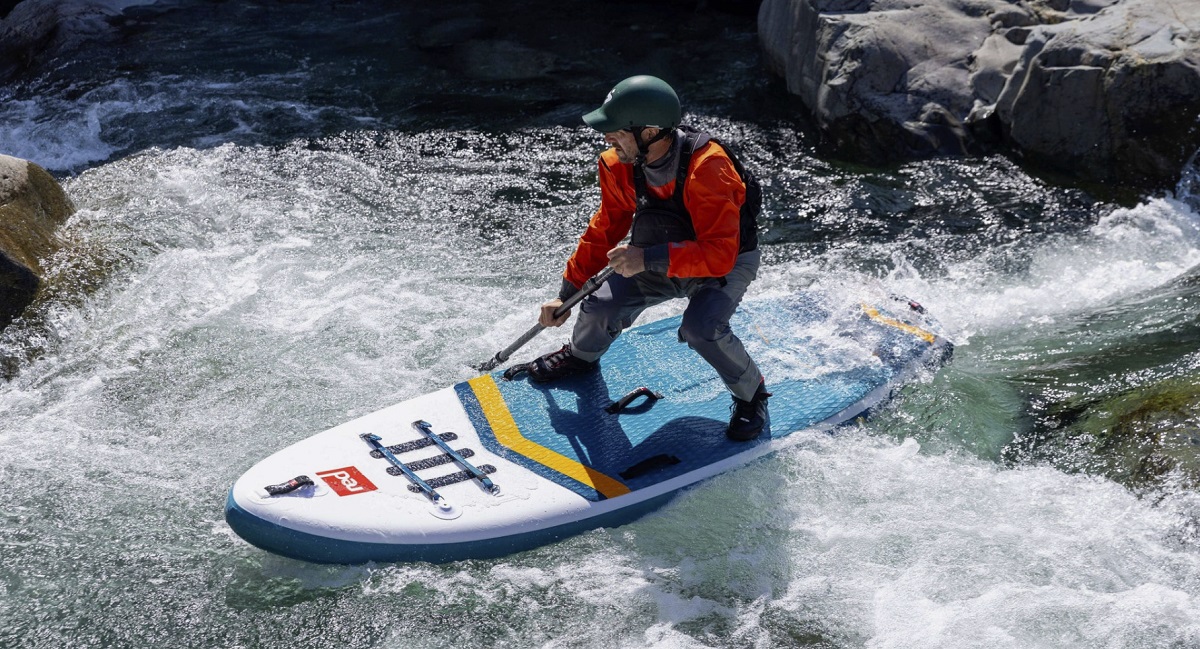
- Red’s MSL construction is known for its long-term reliability
- Flatter and slightly narrower shape for improved speed and tracking
- Raised indexing pads and raised outer deck pads for instant feedback on foot placement
- Flat-strap cargo area with integrated accessory mount
- Twin toed fin boxes for better maneuverability
- Paddle sold separately
- The flat rocker profile is good for speed and stability, but doesn’t handle large features as well as boards with more rocker
Red Paddle Co is possibly the world’s most experienced inflatable SUP manufacturer. Their material and construction innovation and quality control make them some of the most sought-after SUPs on the market. The Wild 9’6” has been redesigned this year as part of Red Paddle Co’s new Future Series SUPs.
The Wild 9’6” has two big differences from most of the other whitewater SUPs on this list. First is the width. At just 34” wide, it’s actually one of the most narrow “standard” size whitewater boards around. The Axis 88 and Atcha 86 are 34” wide as well, but they are also shorter to maximize their maneuverability and surfing performance.
The other big difference is the rocker profile. The Wild 9’6” has a moderately low kicked nose rocker only. There is little-to-no tail rocker. This flatter shape does help with stability and speed, but it does limit the size of the river features the board can easily handle. This is a board built for Class III whitewater at most, but paddling it with speed and precision – making it a great choice for whitewater SUP racing.
5. Badfish Rivershred (Full Review Coming Soon)
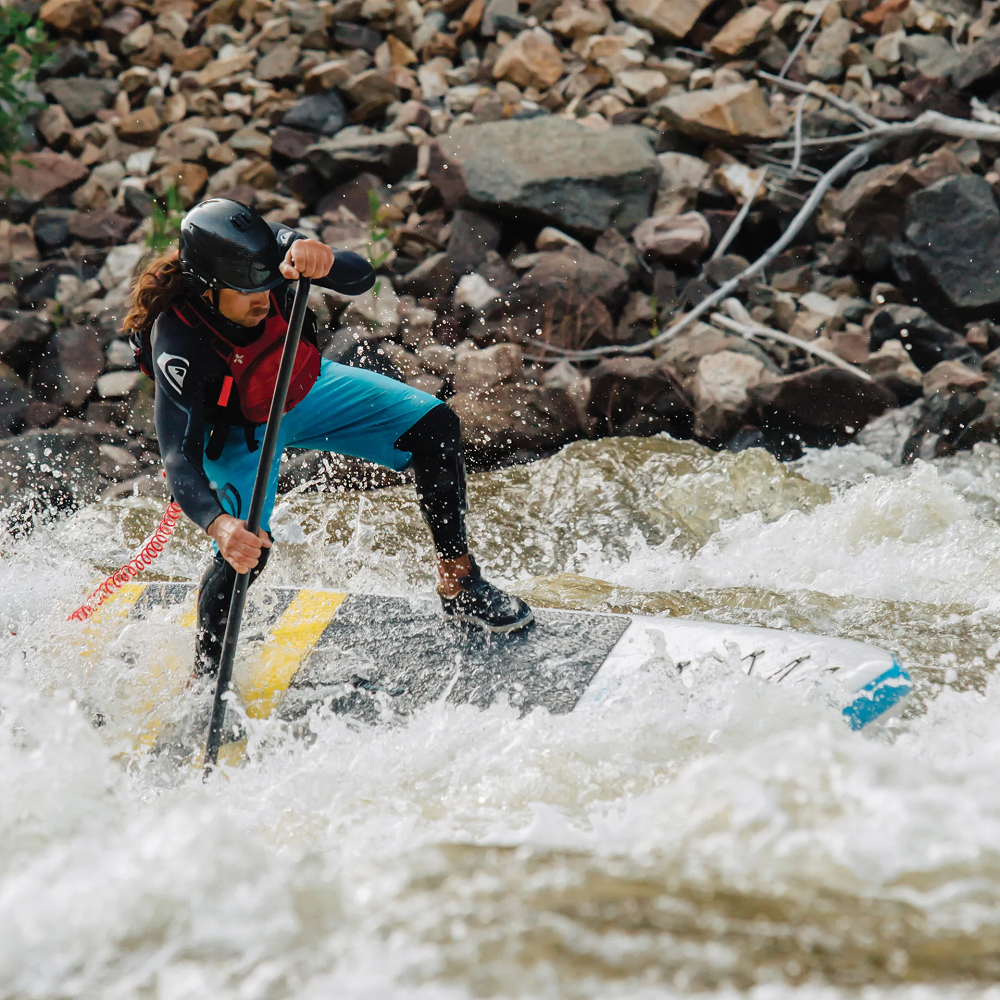
- Extreme shaping and continuous rocker for paddling large features
- Extra-wide tail for improved stability
- PBR (ParaBolic Rail) reinforcement provides a third layer around the edge of teh board for rigidity and durability
- 2+1 fin setup with US fin box and click fin boxes
- Comes with an electric pump
- Paddle sold separately
- Extremely heavy (38 pounds), and extremely rockered
The Badfish Rivershred is built for seriously large conditions. One look at this board and you’ll understand what I mean. From nose to tail, the Rivershred is rockered more than any other whitewater SUP I’ve seen. The rocker is so large that it actually is not the best choice for those who consistently use it on less than Class III whitewater, as a significant portion of the board is constantly out of the water. This makes it less stable (even though it has a broad tail) and difficult to track straight.
In my experiences paddling the Badfish Rivershred, it climbs over tall wave trains with absolute ease, and skips over drops and holes like they are half the size. But, you do have to make sure that you are on your line as the extra maneuverability from the rocker profile makes it very easy to get turned off course by an errant paddle stroke or a poorly-timed diagonal wave.
The Badfish Rivershred is a board for those dedicated to hard-charging whitewater SUP.
6. Hala Radito (Full Review Coming Soon)
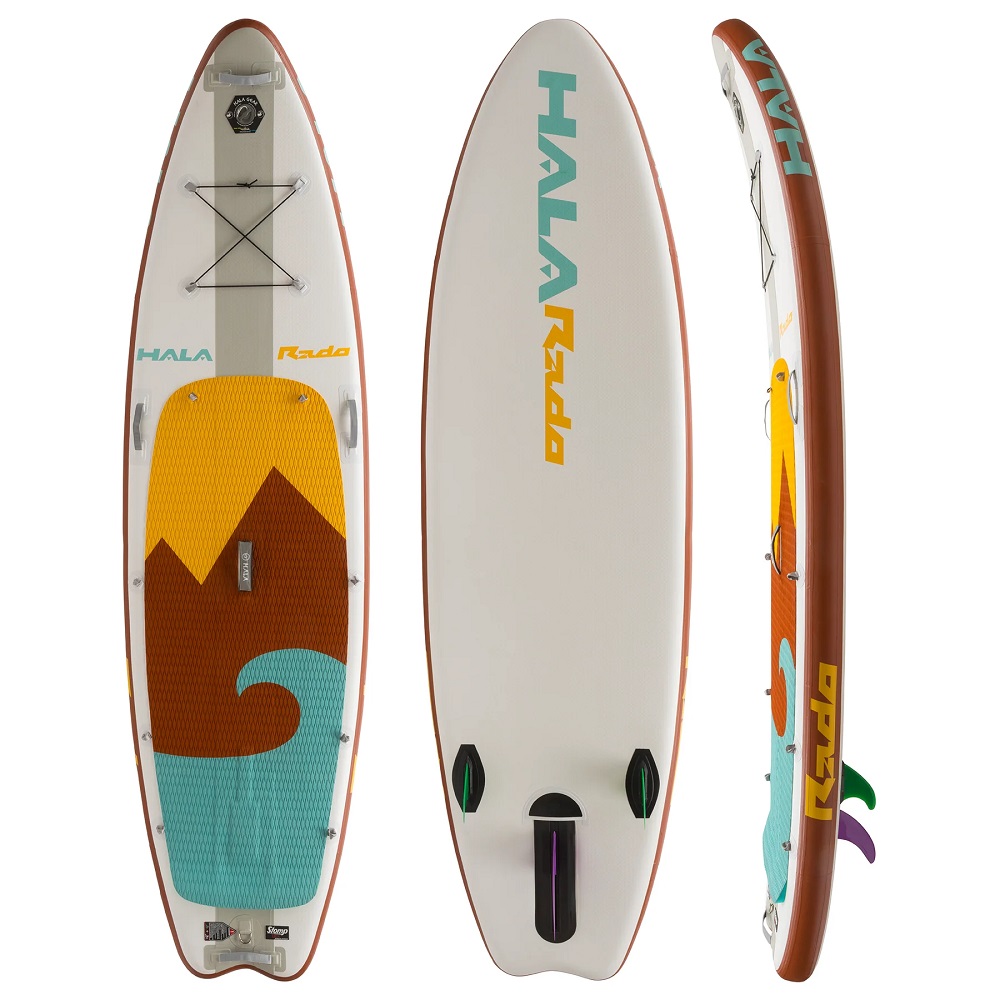
- Durable construction with welded rails and PVC-stringer reinforced deck
- High-traction deck with indexing bumps and soft rigging points
- Continuous rocker profile with medium-high lift
- StompBox 2.5 retractable fin system
- Built for adventure-seeking whitewater paddlers
- Paddle sold separately
- The StompBox fin system requires proprietary fins from Hala to replace or change shape
The Hala Radito is technically part of Hala’s Adventure lineup rather than their whitewater-specific Charge line. But, its size, shape, and features make it a great candidate for whitewater paddlers on overnight trips.
At 10’ long and 34” wide, the Radito is designed for stability and maneuverability – both of which are key for whitewater. The continuous rocker profile gives it the ability to eat up all of the features you’ll find up through Class III+ whitewater, but it’s not as extreme as on the Hala Atcha. This gives it better tracking and speed, along with a little extra usable space for carrying enough equipment for an overnight trip.
For the river paddler who likes to paddle those Class II-III rivers for a few days in a row, the Radito gives you the right blend of play and capacity. For true expedition whitewater paddling, though, you may want to consider its bigger brother, the 10’10” x 35” Hala Rado.
What to Look for in a River or Whitewater SUP
There are a lot of different things that make a paddleboard great for rivers and whitewater.
Construction
Rivers can be tough environments for paddle boards, especially if you plan to start paddling whitewater. River SUPs will have heavier-duty shell materials, extra reinforcements (particularly along the rails) and are often a couple of pounds heavier than their non river-specific counterparts.
Size and Shape
The length of a paddle board is key to determining how maneuverable it will be. Shorter boards will be easier to turn (a great thing when you need to move quickly from one section of the river to the other), but more difficult to track straight. However, if you go too short, then you can begin to lose stability and control.
For general river paddling, there’s no real limit on the length of the board. Choose a shorter board (10’-11’) for more maneuverability or a longer board (11-14’) for better speed and tracking. For whitewater paddling you’ll want to prioritize agility. Most whitewater SUPs are in the 9’6” range, though shorter and longer models are around to match paddler size or, in the case of smaller boards, have a more playful and surfing-friendly performance profile.
Rocker
The Rocker of a paddle board describes how, and how far, the nose and/or tail of the board are turned up from the surface of the water. For River and Whitewater SUPs, more rocker means more maneuverability and more clearance for paddling over progressively larger waves, holes, and drops. SUPs for general river paddling should have a moderate amount of nose rocker at a minimum. However, SUPs for whitewater should have a significant nose and tail rocker to help navigate those features.
Continuous rocker is when the board has a single continuous curve from tail to nose. Kick rocker is when the board abruptly changes angle at the nose or tail. Continuous rocker allows you to have smooth and consistent changes in how far the board is lifted from the water as you step back and forward. Kick rocker keeps the board consistently level as you move until you cross the point where the rocker line changes, then it can quickly adjust lift based on how much pressure you apply.
Equipment for River or Whitewater SUP
We’ve covered many different boards for River and Whitewater paddleboarding, but what other equipment do you need when hitting the river?
PFD / BA / Life Jacket
A Personal Flotation Device is an absolute 100% must for anyone paddling on rivers. Paddlers should be wearing a properly fit, inherently buoyant PFD while on the river, especially while on whitewater. We’re all between swims, and swims happen often on rivers. A PFD provides instant flotation while in the water. Wearing a PFD is especially important because of the issues with leashes on moving water.
Helmets
Casual river paddlers on Class I and flatwater rivers don’t typically require helmets for safe paddling. However, anyone paddling Class II or higher rivers should wear a whitewater specific helmet. These helmets are designed and rated for use in cold water so they stay in place, and designed to provide protection through multiple hits. Bicycle helmets are not safe for whitewater use. Bicycle helmets are designed to break with a single impact and do not provide protection for subsequent impacts.
Leashes
It is absolutely critical to NEVER wear a standard SUP leash while on moving water like rivers, tidal estuaries, races, etc. These leashes can become deadly entanglement hazards in the blink of an eye. While paddling on moving water you should either forgo wearing a leash at all, or wear a quick-release leash on your torso. If you do opt for a quick-release leash you must make sure it is in good working order, and you must practice with it consistently. In an emergency situation when you need to release your leash, you will likely be underwater and unable to see what you are doing.
Paddles
Paddles are a very personal choice (almost more personal than your SUP) and everyone has their opinion on the best this, that, and the other. For river paddling the biggest concern is going to be durability. This is not an environment for delicate, ultralight carbon fiber racing paddles. I like fiberglass paddle blades or carbon fiber/glass blades with a protective coating. These provide a good balance of power for making quick moves and longevity.
Crew
Okay, you may not want to refer to your friends as “equipment,” but river paddling, especially whitewater paddling, should never be done alone. Both for safety reasons and for the fun of sharing the sport! A quality crew of paddlers not only provides a degree of safety, but can help you safely push your limits and advance your skills as you paddle harder rivers.
River Classifications
You’ve seen references to “Class II” or “Class V” rivers in this guide and likely out in the wild as well, but do you know what that actually means? The International Scale for River Difficulty defines river classes by the size and types of features, but also by the general safety risk to a “swimmer” – someone who has come out of their boat or off their board. Keep in mind that river difficulty can also change drastically depending on water levels. A Class II river at lower flows may be a Class IV river at higher flows.
Class 0
Class 0, or “flatwater river” doesn’t really exist in the International Scale for River Difficulty, but this is how I describe a slow-moving, flatwater river with deep channels that require no navigation skill and have very few hazards and other risks.
Class I
Class I rivers are considered “easy” or “beginner” rivers and are defined by being mostly calm with small, regular riffles or splashy waves that require no navigation to paddle through. There is little-to-no risk of injury to swimmers, and they should require no rescue assistance to get back on their craft in Class I rivers.
Class II
Class II rivers are considered “novice” rivers and may have larger, more irregular waves, and larger obstacles, like rocks that should be avoided. Navigating Class II rivers is done easily with large, easily identifiable channels that provide relatively clear passage. Swimmers are seldom injured and don’t normally require rescue assistance to get back on their craft.
Class III
Class III rivers are considered “intermediate” skill level and are the baseline level for most whitewater guide companies. Waves and features are larger, and wave trains are able to swamp an open canoe (waves typically 2’ or more in height). Rapids require skilled maneuvering capabilities to safely navigate and some features, like holes, can become more retentive and difficult to paddle away from. There may also be other hazards like strainers that should be easily avoidable. Class III rapids may also be longer, creating additional safety concerns. Scouting Class III rapids prior to paddling them is recommended. Risk of injury to swimmers increases in Class III rapids, but are still uncommon; swimmers likely require rescue assistance to either re-board their craft or help collect their craft/paddle from the river.
Class IV
Class IV rivers are considered “advanced.” They have intense, powerful, and complex rapids that require skillful navigation and “must-make moves” to safely pass. Waves, holes, and drops become larger and more retentive for both swimmers and watercraft. Hazards like strainers and sieves are present and may not be easily detectable or avoidable. Scouting Class IV rapids is highly advised. Risk of injury or death to swimmers is high, especially in longer rapids, and swimmers most likely will require group rescue assistance.
Class V
Class V rivers are considered “expert” level and carry extreme risk. Features become larger and more powerful. Precise navigation is absolutely critical and failed navigation may result in deadly danger to paddlers and swimmers. Scouting Class V rapids is required. Risk of injury or death to swimmers is extremely high. Self rescue may be difficult or impossible, and group rescue may likewise be difficult.
Class VI
Class VI rapids are considered “Extreme,” “Exploratory,” or “Unrunnable.” These rapids are so large, intense, complicated, or dangerous that they should not be attempted by anyone other than highly experienced professionals.
Summary of Best SUPs for Rivers and Whitewater
If you’ve read this far in our guide for the Best SUPs for Rivers and Whitewater, thank you. There’s a lot that goes into choosing the best paddle board for you and hopefully we’ve presented a healthy variety and highlighted their pros and cons.
For the casual river paddler on calm flatwater or Class I rivers most any stable, comfortable all-around paddle board will do the trick. For those paddling in shallower, rockier, slightly faster, rivers with more riffles and waves, then a River-specific board (like those on our list) are great choices to paddle both on the river and on lakes and other flatwater areas.
If your idea of paddling rivers involves waves that slap over your board and can occasionally knock you down (Class II and everything beyond), then I would recommend checking out the variety of whitewater-specific SUPs available. These boards are designed to maximize your fun on more challenging rivers.
Thanks again for reading, and let us know below if you have any questions about River and Whitewater Stand Up Paddle Boarding!
Mike Carney
Latest posts by Mike Carney (see all)
- Glide SUP Inflatable Stand Up Paddle Boards (iSUPs) Review – 2025 - March 14, 2025
- Best Paddle Boards for Rivers and Whitewater, 2025 - March 14, 2025


